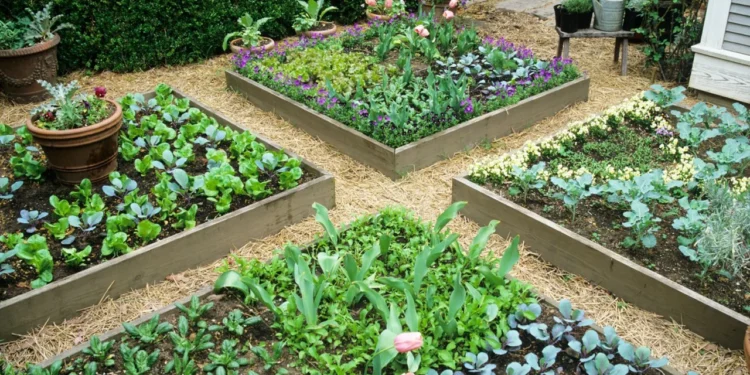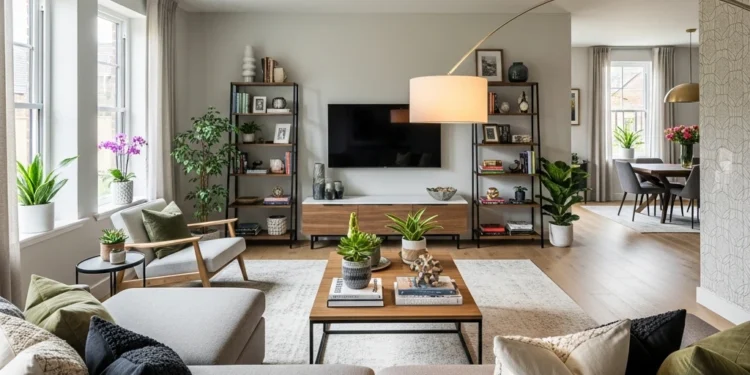Gardening is perhaps one of the most enjoyable and calming activities you can do right in your backyard. However, let’s be honest, it can be quite daunting to commit to gardening, especially if you have a small outdoor space (or none at all).
In this easy-to-read guide, you can learn quick tips to get started on your gardening adventure, from creating a garden layout to selecting tools like utility trolley carts to make life simpler.
Let’s get your garden growing the stress-free way!
Planning Your Garden Layout with Simplicity in Mind
Before you purchase seeds or grab a shovel, stop and plan your garden first. A thriving garden takes root in the correct location.
In this case, find a spot that receives at least six hours of direct sunlight per day since most vegetables, flowers, and herbs require the full sun to grow.
Other than that, adequate drainage is also needed, especially during the rainy season. Steer clear of spots where water collects or spills over to avoid your seedlings drowning.
Finally, consider your space and what type of arrangement will work best for your garden, including:
- Raised Beds – Great for maintaining soil quality and minimizing weed issues. Backyard or larger areas are suitable.
- Containers – Suitable for patios, balconies, or renters. Utilize pots, old buckets, or fabric grow bags.
- Direct Soil Planting – Ideal for those with good ground soil and plenty of space. More work but provides room to grow.
If neatness is your intention, it is wise to lay out paths and garden spaces ahead of time. This way, you will have space to walk in between plants, water them easily, and not hurt fragile seedlings.
Do your outdoor garden spaces require more space for tools or soil? You can incorporate outdoor garden storage sheds into the planning in the beginning, so that all will be contained in one location.
Tool Storage That Keeps Things Neat and Accessible
After you’ve determined where your garden will be, the next step is to organize your gardening tools. Even with just a few essentials, messy tools can easily get out of hand without a proper storage strategy.
Some simple solutions for smaller spaces or multi-person spaces include:
- Wall Hooks & Pegboards – Install them on a garage wall, fence, or other dry surface to store hand tools off the floor.
- Stackable or Shelving Drawers – Ideal for holding seed packets, gloves, and plant food.
- Portable Storage – Store your tools in a utility trolley cart so you can simply wheel them out into the garden and back. It’s convenient and keeps you organized between gardening sessions.
If you’re the handyman type, get creative and reuse pieces of old furniture, such as shoe racks, metal cabinets, or wood crates. For extra security (and keeping children or pets out), lockable plastic bins or garden toolboxes are ideal solutions.
Organizing every tool into its own section not only saves you from having to look for it, but it also prevents your tools from rusting, cracking, or randomly disappearing.
Must-Have Tools for the New Gardener
You don’t need a massive toolbox to start with. Get the basics first and expand on that as your garden grows. Here are some essentials you’ll need to get started:
- Hand Trowel – The ultimate digging tool for small holes, planting seedlings, and digging out soil.
- Gardening Gloves – Protect your hands from thorns, splinters, and soil.
- Pruning Shears – Keep plants healthy by cutting off dead leaves or overgrown stems.
- Hose or Watering Can – A basic can is fine for small gardens; for larger plots, a hose with an adjustable spray nozzle.
Other than the tools you need, there are some useful add-on tools you might want to consider including:
- Kneeling Pad – Spacing your knees when weeding and planting.
- Weeder Tool – Enables easy yanking of weeds without harming your plants.
- Soil Scoop – Less cumbersome than a trowel for planting into pots or making compost.
Pro tip: Don’t go out and buy everything at once. Try gardening for a few weeks, then add to your toolkit based on what you discover that you really need. Your toolkit should grow with your experience—not your whim buys!

Beginner Gardening Mistakes to Avoid
Even the most enthusiastic new gardener will mess up a few things. Here are some of the most common mistakes to avoid and how to correct them:
Mistake 1: Overcrowding Plants
It’s hard not to try and fit as many plants as you can into a tiny space, but overcrowding prevents air circulation and root growth. Read seed packages carefully—they’ll instruct you to plant each type a certain distance apart.
Mistake 2: Overwatering (or Underwatering)
Too much water can rot roots, while too little stunts growth. Touch the soil before watering—if it feels dry about 2 inches down, it’s time to water. Early morning is the best time to do it.
Mistake 3: Ignoring Soil Quality
Soil isn’t all equal. If your plants aren’t doing well, try testing with a simple kit or simply add compost to give them some depth. Light, free-draining soil full of nutrients will equal healthy roots.
Start small—you can start with a handful of pots or one raised bed—and see what your plants do before you increase. That way, you won’t burn out or get frustrated. Gardening needs to be fun, not stressful.
Making Gardening a Relaxing Routine
One of the best things about gardening? It allows you to disconnect from the outside world. Unlike work or chores, plants adhere to nature’s schedule, which is nice to follow if you want to destress.
Here’s how to incorporate gardening into your routine:
- Set Weekly Tasks – Designate light tasks such as watering, pest-scouting, pruning, or harvesting on particular days. A small amount each week makes a big difference.
- Monitor Your Progress – Take a little notebook or use a garden app where you record what you planted and when. That way, you can discover what works and when to harvest.
- Unplug Outside – Take the phone inside, sit, and appreciate quiet moments. Venturing out for even 15 minutes can decrease stress levels and enhance concentration.
Record each small victory, like your very first sprout, a blooming flower, or a herb on the dinner table. These little victories are what make gardening worthwhile, especially after a long and exhausting day.
Conclusion
Entering the world of gardening does not necessarily involve ripping up your entire lawn or spending a fortune on equipment.
With a little planning, some solid fundamentals, and a routine habit, you can establish a low-stress, high-yield gardening habit even with minimal experience and tight space to work with.
Planning your garden to include sun and drainage right from the beginning is the key. Make sure to get smart storage for tools to keep them organized. Hooks on the wall, trolleys, or even repurposed furniture are all time-saving and tidy.
For gardening gear, start small and simple. As your plants grow, you’ll figure out what you need, and your toolkit will expand with them.
Finally, the whole gardening experience is less about what you grow and more about what you bring out of yourself: patience, imagination, and a touch of everyday peace of mind.












